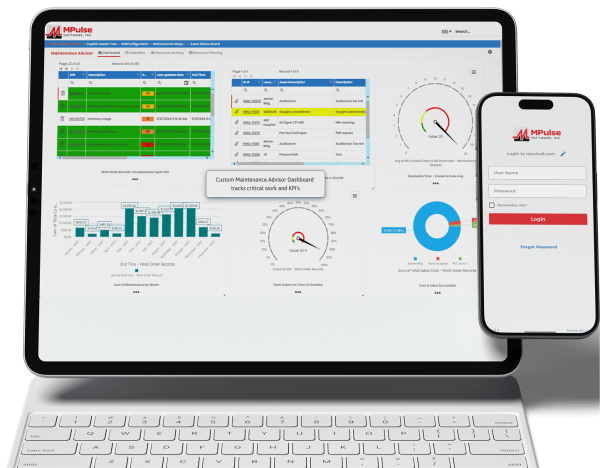Many MPulse customers get so excited about their new CMMS software they want to jump in with both feet and start entering data right away. I get it. I feel the same way when I start a new project. But the old adage “garbage in, garbage out” says it all when it comes to setting up CMMS software for the first time. It’s important not to get carried away importing outdated, incorrect, or insufficient information.
To get the most out of your CMMS investment, you need to proceed carefully so you have a solid foundation of good data that will build in value over time. If your CMMS software gets bogged down with bad data, you’ll never get truly meaningful information about your assets—which is why you bought the software in the first place.
So how do you setup your CMMS software right the first time? Here are a few tips I’ve picked up through years of experience.
Table of Contents
Step 1: Identify Your Key Assets
Start by making a list of 10-20 of your important assets. You can always add more assets later, but first pick the ones that play the largest part in your operations. They’re likely to be the ones your maintenance team works on most, so a quick review of your past year’s work orders should show you where to focus.
Step 2: Determine Each Asset’s Maintenance Policy
Next determine the best maintenance policy for each asset. Plant Services contributing editor David Berger, in his 2013 article, “How to determine the best maintenance policy,” outlines three ways maintenance can be triggered: use-based maintenance, fail-based maintenance, or condition-based maintenance.
Use-based maintenance (UBM) is triggered by time, meter, or event. This type of maintenance is pretty common in maintenance departments, as preventive maintenance programs are based on a certain time, meter, or event triggers—such as changing the oil every 3,000 miles or every 3 months.
Fail-based maintenance (FBM) is running an asset to failure. A simple example would be replacing a burned out lightbulb. While the point of CMMS is to reduce fail-based maintenance in favor of a more proactive maintenance plan, there are some exceptions. Plus, if your assets have been maintained based on failure in the past, you have important data that can help you predict future failures.
Condition-based maintenance (CBM) is triggered based on meters and gauges on assets. When an asset’s condition changes outside of a specified range, maintenance events are triggered. CBM data can be gathered manually or automatically.
Step 3: Build a Work Plan
Once you have determined each asset’s maintenance policy, you can use your CMMS to build work plans. For assets on a UBM policy, you’ll build a work plan and schedule maintenance tasks based on the factors you’ve chosen. For CBM, you’ll create a range of conditions that will form the basis of a work plan and schedule as well as forecast when CBM will likely occur. Last, but not least, while it’s hard to plan for FBM, you can forecast when failure is likely to happen and ensure you’re ready to react, with the right parts in stock and repair procedures in place.
Step 4: Support the Maintenance Plan with the Right Data
Next you’ll decide what data you need to capture to support your plans. Some may be available in your archives, but much of it will need to be collected from this point forward. And that’s okay, because over time, it will grow in quantity and in value. If you choose the right data, it won’t be long before you realize its value—and you’ll be glad you took the time to get it right.
Creating a solid foundation with good CMMS data will make everything run more smoothly and successfully. Don’t create more work for yourself by taking shortcuts on the front side just because you’re in a hurry. Take the extra time to get it right the first time, and your CMMS investment will pay dividends for years.





